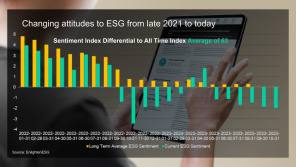However, Artificial Intelligence (AI) can help us establish an objective truth faster and more consistently once those ground truths are agreed.
Investors are already discovering that the components of ESG may be in conflict with each other and not the holy trinity originally envisaged. Take Cambodia’s recent appeal for foreign investment to help develop their new oil discovery. My ‘E’ antenna says, ‘avoid this black carbon heavy fossil fuel’.
But my ‘S’ conscience has its heartstrings tugged by the plans of one of the world’s poorest countries to use oil revenues to develop health and education systems. As for ‘G’, well, Cambodia has come a long way since the despotic years of rule by Pol Pot and the Khmer Rouge.
What does AI bring to the world of ESG rating?
How then can Artificial Intelligence (AI) algorithms do a better job in spotting and objectively analysing ESG risk? First, given the poor availability of ESG data (and the danger or misreporting), AI offers a powerful approach to data acquisition and validation. It is capable of scouring thought leaders’ comments on social media, influencers such as Amnesty International’s red-flags, as well as news flow on events and sentiments.
You can therefore eliminate a reliance on either what a company says about itself or what its management tells a human analyst.
Second, ratings are often criticised for inconsistencies over time, sector, country and more. Machines are inherently objective and can be scaled across vast investment universes. This makes AI-led ESG risk assessment a compelling solution in principle.
Algorithms will, in the future, be capable of being run over all the available structured and unstructured information linked to tens of thousands of listed businesses, tirelessly uncovering developments worthy of analysing and scoring, all in a consistent and objective manner. While there are huge challenges to developing AI in this area, the current alternative (human analysts) are expensive, inconsistent, and necessarily subjective.
ESG Risk or Responsibility?
Let’s look at a typical approach of one major US investor today, the Californian State Teachers Retirement System (CalSTRS) . CalSTRS is the second largest pension fund in the US with Assets Under Management of £283bn. Last year, it decided that a small proportion of its investments must be net zero. They have established a roadmap for their investment managers whereby that percentage must increase steadily year on year.











